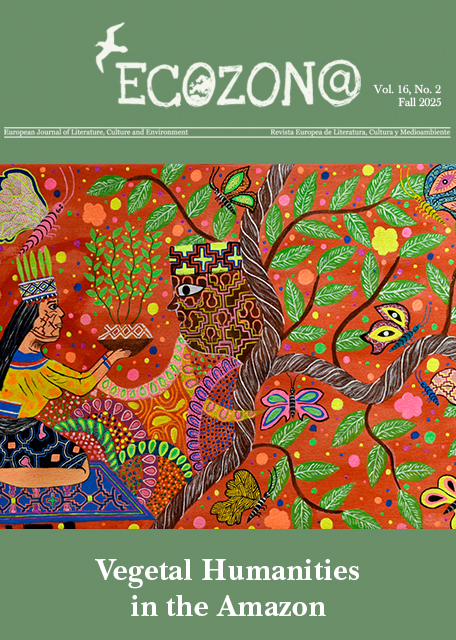<b>Una llamada por la justicia medioambiental en <i>El zorro de arriba y el zorro de abajo</i> de José María Arguedas</b> // A Call for Environmental Justice in José María Arguedas's <i>El zorro de arriba y el zorro de abajo</i>
DOI:
https://doi.org/10.37536/ECOZONA.2018.9.2.2285Parole chiave:
Ecocrítica, ecofeminismo, mito, José María Arguedas, El zorro de arriba y el zorro de abajo, héroe burlador // Ecocriticism, ecofeminism, myth, trickster heroAbstract
Resumen
Este artículo muestra cómo en su novela El zorro de arriba y el zorro de abajo, José María Arguedas combina su voz de autor con la de figuras míticas antiguas para hacer un alegato más poderoso por la justicia ambiental a favor de los pueblos indígenas en el contexto de la industrialización del Perú moderno. A diferencia de sus anteriores novelas realistas Yawar fiesta, Los ríos profundos y Todas las sangres, que tienen una visión más antropológicamente descriptiva de los indios y sus relaciones con los pueblos colonizadores, esta novela se encuadra dentro del realismo mágico y se centra en el paraíso perdido de Chimbote, una ciudad costera. La imagen que Arguedas nos ofrece de la ciudad explotada como una mujer caída es una crítica profética, que confirma los principios del discurso de Val Plumwood y otras ecofeministas contemporáneas. Este narrador reinterpreta la figura mítica del héroe burlador (trickster) a través de una actualización literaria de los zorros míticos de la cultura Moche con el fin de crear una forma moderna de pensamiento mitológico. A través del diálogo entre dos zorros, el novelista es capaz de trascender el tiempo y el espacio para brindar a los lectores una amplia perspectiva ecocrítica del transcurso de la degradación ambiental y social que la industrialización desenfrenada produce en el Perú del siglo XX.
Abstract
This paper argues that in El zorro de arriba y el zorro de abajo, José María Arguedas combines his authorial voice with ancient mythical figures to make a powerful call for environmental justice for indigenous peoples in the context of the industrialization of modern Peru. Unlike his previous realistic novels Yawar fiesta, Los ríos profundos and Todas las sangres, which have a more anthropologically descriptive view of Indians and their relations to the colonizing peoples, this novel adopts magic realism and is about the lost paradise of Chimbote, a coastal city. Arguedas’ image of the exploited city as a fallen woman is a prescient critique, which confirms tenets of the discourse of Val Plumwood and other contemporary ecofeminists. Although the mythical “zorros” from the highlands and the lowlands are derived from Moche culture and other Peruvian legends, in his new myth recreated in their dialogue, the “zorros” become “trickster heroes” in a modern age with their mythic voices. Through their dialogue, Arguedas is able to transcend time and space to give the readers a broad eco-critical perspective of the course of environmental and social degradation under rampant industrialization in 20th century Peru.
Downloads
##submission.downloads##
Pubblicato
Fascicolo
Sezione
Licenza
Authors who publish with this journal agree to the following terms:
a) Authors retain copyright and grant the journal right of first publication with the work simultaneously licensed under a Creative Commons Attribution License that allows others to share the work with an acknowledgement of the work's authorship and initial publication in this journal (CC BY-NC for articles and CC BY-NC-ND for creative work, unless author requests otherwise.
b) Authors are able to enter into separate, additional contractual arrangements for the non-exclusive distribution of the journal's published version of the work (e.g., post it to an institutional repository or publish it in a book), with an acknowledgement of its initial publication in this journal.
c) Authors are permitted and encouraged to post their work online (e.g., in institutional repositories or on their website) prior to and during the submission process, as it can lead to productive exchanges, as well as earlier and greater citation of published work (See The Effect of Open Access).










